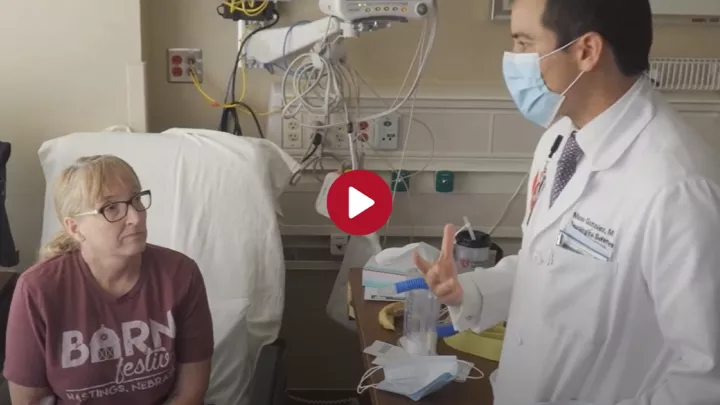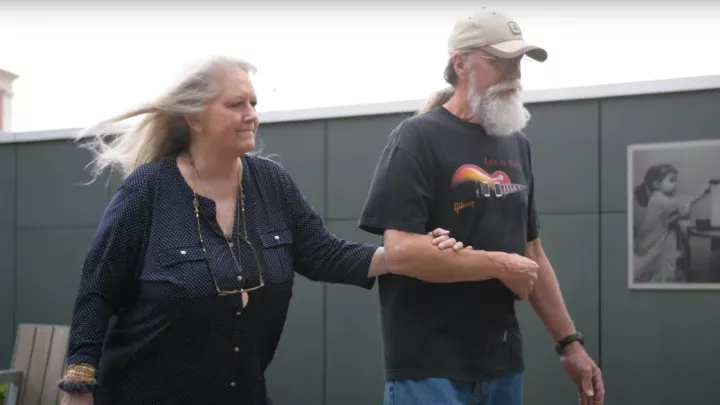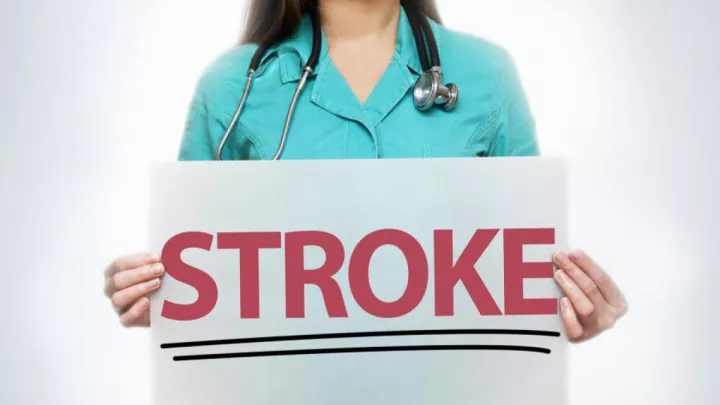A perfect formula: College professor returns to teaching after critical stroke
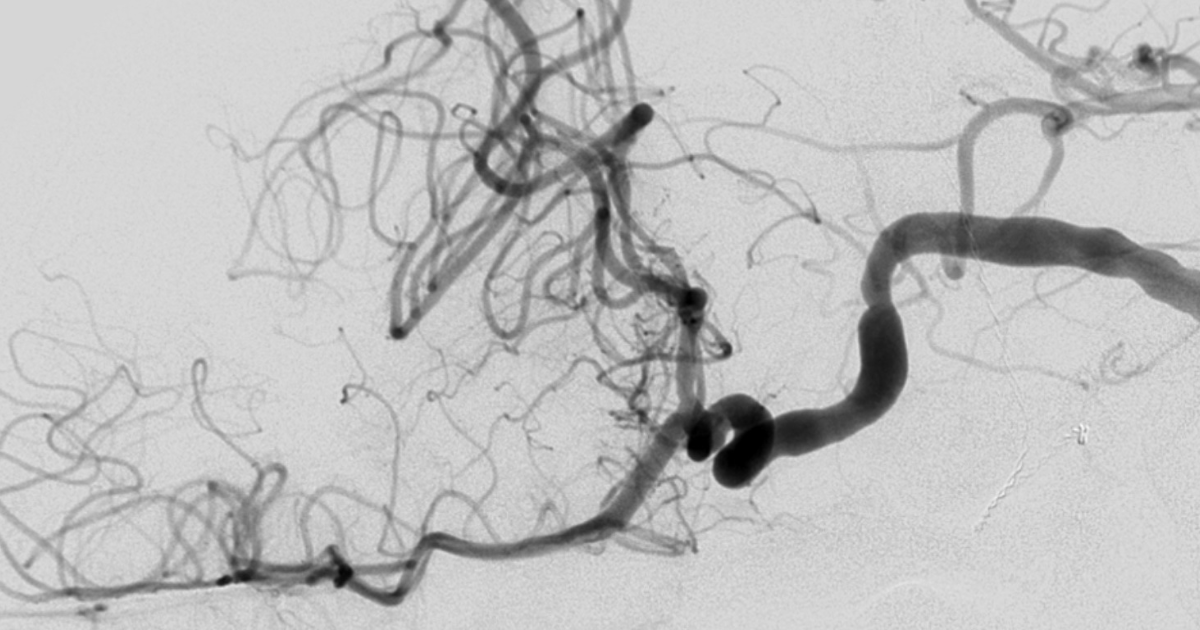
It was Jan. 9, a new semester at Midland University in Fremont, Nebraska, where Lynn Schnoor has been a business professor for 18 years. She started this semester with excitement and trepidation.
Her first class was business intelligence, where she led a discussion on how to use JAVA code to write programs and build intranets and software for businesses. Later that day, she started her business statistics class with a lesson on standard deviation and how to develop the formula to calculate standard deviation.
Heavy stuff, even for someone with a mathematical background.
What makes this day extraordinary is three months earlier, Lynn suffered a large vessel blockage in the left side of her brain, one of the most severe forms of acute ischemic stroke.
Ischemic stroke involves a narrowing or blockage in the arteries to the brain. If the artery isn’t opened quickly, there is risk of permanent brain damage and even death. Would she be able to teach like before; would she remember formulas; would words flow freely? Lynn’s worries never panned out. The day unfolded without a glitch.
Fortunately, everything aligned that Saturday morning in October 2022 at her family farm near Scribner, Nebraska, when she suffered a stroke.
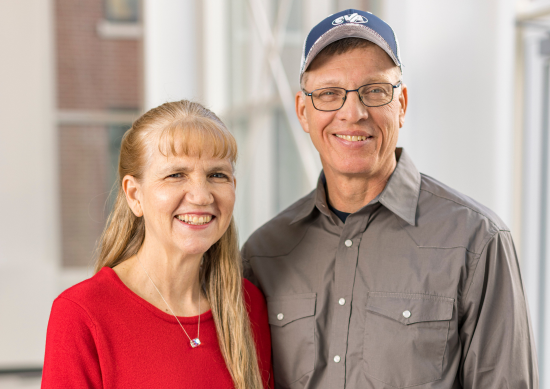
It was harvest, and normally her husband, Eric, would have been out in the fields when Lynn woke up, but Eric decided to have breakfast with Lynn before heading out. When Lynn walked into the kitchen, Eric noticed something strange. “She was holding her right hand and looked confused,” says Eric. “I asked some questions, but she didn’t respond.”
“I felt like I was having an out-of-body experience,” recalls Lynn. “I could hear Eric asking me questions, but I couldn’t speak.”
Eric helped her to the kitchen table and then noticed the right side of Lynn’s face had begun to droop, and she couldn’t move her right arm and leg. “I knew she was having a stroke,” says Eric, who quickly called the local volunteer emergency squad.
Everything fell into place. The emergency volunteers were ready after just responding to a previous call and got to Lynn right away. They recognized that she was having a stroke and had dispatch call the helicopter service to be flown to Nebraska Medical Center.
When Lynn arrived at the Emergency Department, the stroke team was ready and immediately took a CT scan of Lynn’s brain. The scan confirmed an ischemic stroke, requiring an emergency procedure.
Nebraska Medicine neurosurgeon Nicholas Borg, MD, performed a procedure called mechanical thrombectomy. This is performed by threading a catheter through the femoral artery to the clot site. A suction catheter and sometimes a stent is used to remove the clot, restoring blood flow to the brain, preventing large areas of the brain from dying.
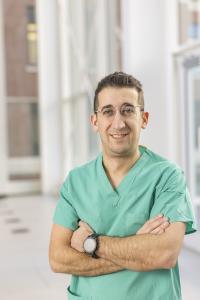
“This procedure has been a game changer in medicine,” says Dr. Borg. “Ten years ago, administering the clot-busting medication tPA (tissue plasminogen activator) would have been the only treatment available. However, tPA is known to be less effective at treating clots like this one which causes large vessel blockages. As a result, patients may have a lifetime of disability.”
When Eric and their children arrived at Nebraska Medical Center, Lynn was recovering in the Neurointensive Care Unit, just over three hours since Lynn’s first stroke symptoms.
“We couldn’t believe it,” says Eric. We walked into her room, and she immediately gave a thumbs-up. She was awake, alert and energetic.”
“There’s about a four-to-six-hour window in which we like to perform this procedure for best results,” says Dr. Borg. “The more time that passes, the less likely patients make a full recovery.”
The next day, Lynn was performing quadratic equations on paper to test her brain function. “I wanted to check my cognitive ability, so I started doing math,” Lynn says. ”Even the doctors were impressed.”
Lynn headed home two days after what could have been a life-altering stroke – and began speech therapy a few days later. She progressed quickly. “My goal was to teach again in January, so I took my speech therapy very seriously,” Lynn says.
Lynn met that goal and hasn’t skipped a beat. “I feel great,” she says. “I’m teaching with no cognitive problems. The only lingering effect is that I get tired.”
“It’s cases like these that make our job rewarding,” says Dr. Borg. “When you see someone have a critical stroke and be almost back to full function 24 hours later, that makes it all worthwhile.”
Lynn’s amazing outcome is attributed to Eric’s quick recognition of her stroke symptoms, the emergency squad’s rapid response and the helicopter that brought Lynn directly to Nebraska Medical Center.
“Nebraska Medicine is the only Comprehensive Stroke Center in the region,” says Dr. Borg. “We have a team on standby 24/7 to treat acute ischemic strokes from large and medium vessel blockages. We are proud of this service and the positive effect it has on our patients’ quality of life.”
“We realize how lucky we are that everything went so smoothly and that we ended up at Nebraska Medical Center,” says Eric. “Everyone was so good to us. The nurses were top-notch, and the doctors checked on us multiple times a day. We are so grateful for all of them.”
Stroke is a leading cause of serious long-term disability and the third leading cause of death in this country. Nearly 800,000 people suffer a stroke each year, and approximately 1 out of 6 will die from stroke. Stroke risk increases with age, but strokes can occur at any age.
Learn how to detect a stroke
Learn the signs and symptoms of a stroke at NebraskaMed.com/stroke-signs.


